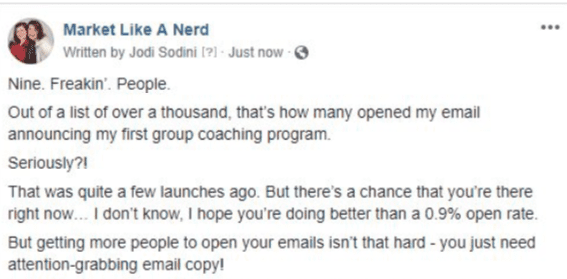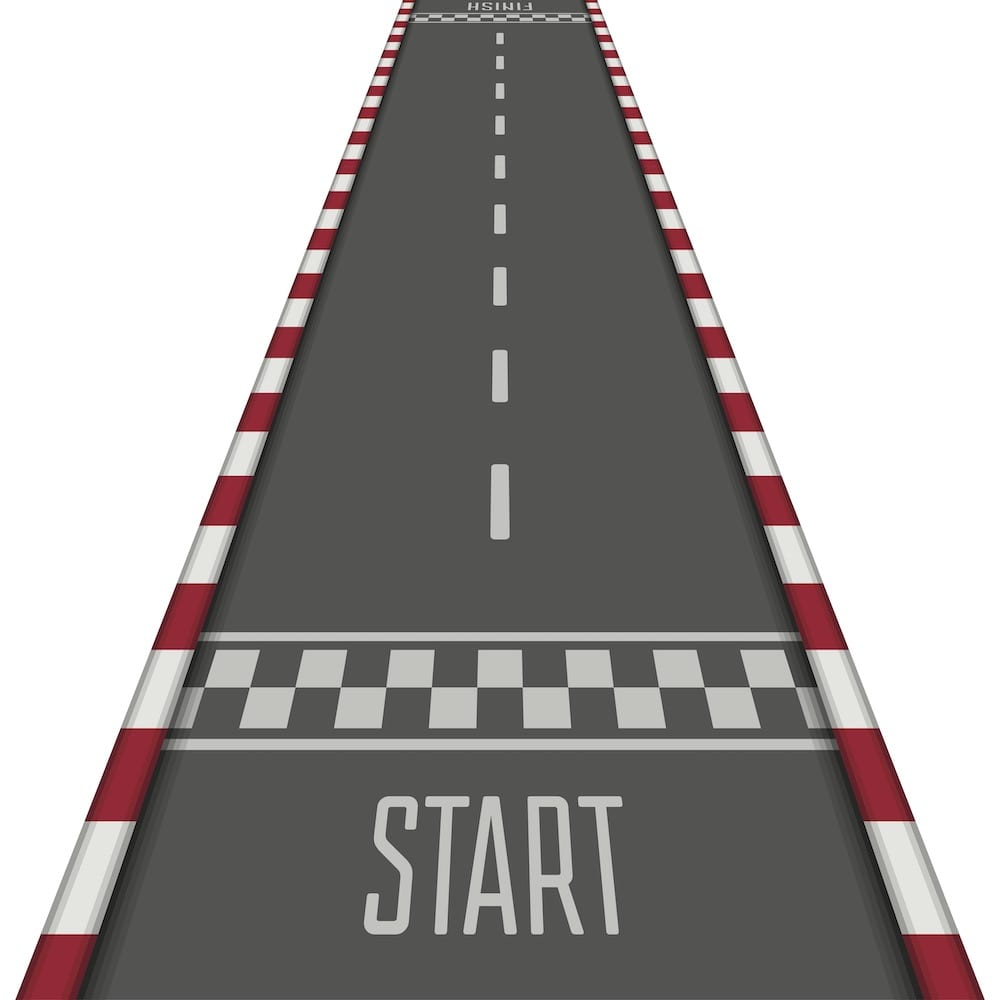How to Write Facebook Copy That Drives Readers to Action
By: Amanda Goldman-Petri, Founder, Market Like A Nerd
February 24, 2020
Do your Facebook ads stop users mid-scroll?
If the answer is yes, great! (If not, check out my last What’s Shakin’ contribution before reading on).
As a social marketer, your job isn’t over once you grab viewers’ attention—the rest of the copy needs to drive an action. And if an ad can’t drive clicks, it’s probably not doing its job. Sure, likes and comments may cue the algorithm and expose an ad to friends of friends, but for the most part, I’ve found that clicks are better indicators of success.
While many brands still write ads that are unoriginal and salesy, I’m a firm believer that your copy should reflect the thought, intention, and heart that you put into it. To help you get there, I’ve come up with a RACECARS method for determining successful CTAs and winning ad angles:
R = Real-Life
The first option is to use a true-to-life angle. Take an image from your existing Facebook content arsenal and tie it to whatever you are offering. For example, here’s an image of me with a group of clients on a beach in Mexico. Notice how we customized the URL to the message and the image.

The message here is that on our retreats, I teach my clients office-worthy marketing skills, but we also get out from behind our computer screens and enjoy ourselves. Not only will this image disrupt the newsfeed, but it’s also a little risky. What’s the worst that can happen? If an ad doesn’t work (or raises too many eyebrows), you can always stop running it.
A = Appropriate Tip
It’s crucial to teach viewers something new, and then make a pitch. If you provide value before you make your offer, readers are more likely to respond to your ad. Let’s say you’re giving them a free white paper about sales. What tip can you give that’s in line with your white paper, and that works as the hook for your free offer?

Here, we teach first, and wait to make our pitch until the end.
C = Concept
Define a relevant concept and use it as a window into your offer. What term or concept is misunderstood in your industry? Do you have a new or controversial take on it? In my case, I took the concept of growing a business, and made the case that you shouldn’t use the word “growth” in your set of goals.

The hook? “Do not grow your business.” Again, this ad angle is risky, so it stands out. (I later explain why businesses should aim to scale rather than grow.)
E = Example
What does the day-to-day life of your ideal client look like? Find common ground between your brand values and your target’s everyday life. For example:

This format works well for B2B marketing. At some point, your target’s products or services have been treated like an eggplant that someone bought at the store and no longer wants. The right messaging could change customers’ minds about requesting a refund, or even get them excited about continuing to work with you. The value of the ad copy is in its ability to serve as a template for this scenario.
C = Consequence
What is the consequence, or end goal, of your audience mastering what you have to offer? In this hook, we defined the first step before the target hits their goal. What comes afterward? Closing sales with a higher price tag. So, I’m going to teach potential clients how to sell at a $100,000 price point, but first, I’ll teach step number one, which dovetails into my freebie.

Next, I outline the next steps of a customer journey, culminating a free training to allow potential clients to sample what I have to offer.
A = Answer Objections
What are some audience objections or pain points? Answer those objections with a story. Hook the objection into a free offer.

R = Right vs. Wrong
Think about the mistakes your competitors make. Where did they go wrong? Prove that you’re the expert who makes the right (i.e., smart and strategic) decisions.

Here, we pit a complicated webinar funnel against a lean funnel. This is a little controversial because webinars are huge in the coaching industry. Coaches swear by them, and if I challenge that, I can break through the feed.
S = Small Problem, Simple Solution
What small, but common problem do your ideal clients share? Give them a simple solution for it. That solution could raise new issues down the line, so get ahead of those future pain points with your special offer.

Here, the problem is low email open rates. The solution? Attention-grabbing email copy in our free templates.
In summary, if you want to drive clicks with your Facebook ads, try a variety of unexpected angles rather than standard pitches. Standard pitches are tired and they’re not stopping the scroll. So, hit the gas and drive those RACECARS all the way to higher clicks and sales.
For more examples, check out Market Like a Nerd’s cheat sheets.


